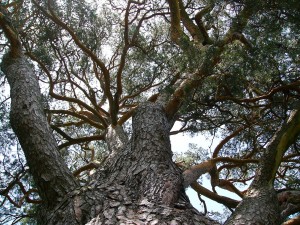Search for a simple water filter goes out on a limb
March 7, 2014MIT researchers have figured out what Mother Nature seems to have known all along: a section of sapwood (the soft, sap-containing wood found just beneath the bark of a tree) can filter water.

The sapwood’s xylem tissue —which can be compared to a drinking straw that’s being used by the tree — pulls the water up, trapping bacteria and other organisms along the way. Researchers said up to four liters of drinking water — a little over a gallon — can be filtered daily.
For the study, researchers cut a young branch, removed the bark, then placed a rubber tube over it and sealed it with epoxy. At one end of the branch, they attached a tube, and then filled the tube with colored water. The tube was then pressurized, forcing the water through the branch. In later experiments, researchers used water contaminated with E coli.
The researchers said all of the dye; up to 99 percent of the E. coli; and 99 percent of particles over 150 nanometers (a measurement so small it’s usually used to describe an atom’s dimensions), were filtered out.
The system isn’t perfect, however. According to MIT, the branches must be fresh. They also most likely cannot filter out viruses, because they’re too tiny.
Still, experts say there’s a good possibility there are other types of plants that could work better than the pine branches. And the discovery could be a boon for those without access to clean drinking water.
If you want to build your own, or learn more about the study, click here.